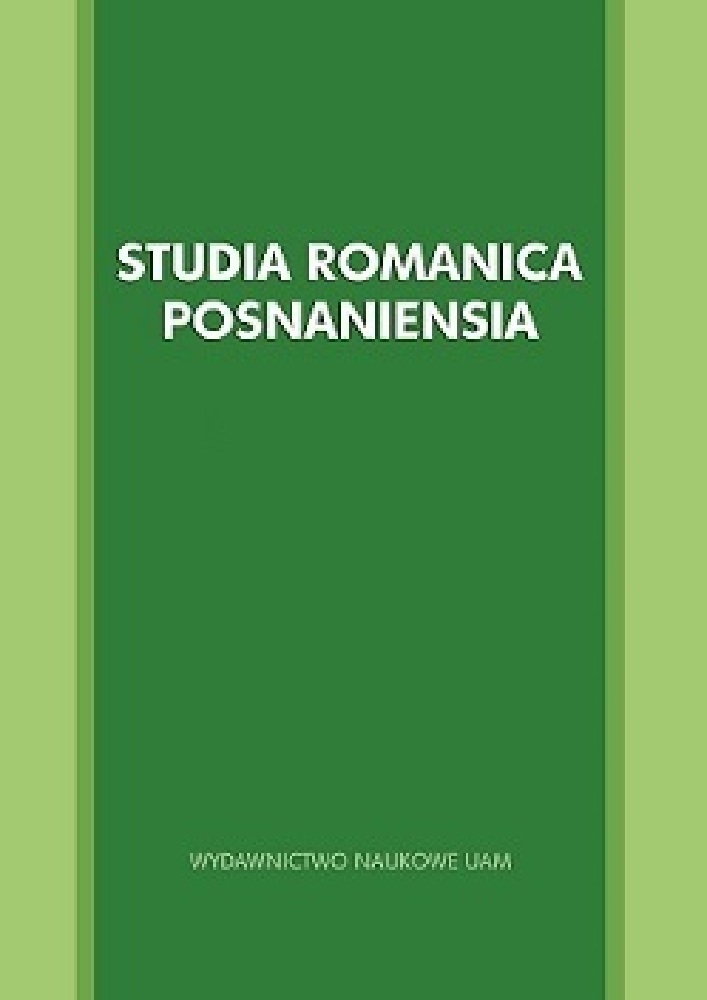Abstrakt
This paper discusses the stages of the translation process and their ideological features. Teaching translation, which includes an explanation and a simulation of the whole process, is supposed to acquire a new ideological dimension since it takes place in the classroom. The translation process is defined as a series of negotiations and decisions made by several “ideological subjects” involved in carrying out a particular translation service. The simulation of this process is suggested as a didactic method of teaching translation and indicated as a useful introduction into the market of professional translation. The study emphasizes a more active performance of students in learning translation. It also includes some didactic recommendations and explanations of the ideological burden always present in the practice of translation. The paper is mainly based on the Manipulation School approach in Translation Studies.Bibliografia
Althusser, L. (1988). Ideología y aparatos ideológicos del Estado. Buenos Aires: Nueva Visión.
Bassnett, S. (1998). The Translation Turn in Cultural Studies. En: S. Bassnett & A. Lefevere (Eds.), Constructing Cultures: Essays on Literary Translation (pp. 123-140). Clevedon: Multilingual Matters.
van Dijk, T. A. (2006). Ideología. Una aproximación multidisciplinaria (trad. de L. Berrone de Blanco, 2a ed.). Barcelona: Gedisa (Serie CLADEMA).
Estándares y directrices para el aseguramiento de la calidad en el Espacio Europeo de Educación Superior (ESG) (trad. ACPUA). Disponible en http://www.enqa.eu/indirme/esg/ESG%20in% 20Spanish_by%20ACPUA.pdf
Halliday, M. A. K. (1978). The sociosemantic nature of discourse. En: Language as social semiotic (pp. 128-151). London: Edward Arnold (Publishers) Ltd.
House, J. (2015). Translation Quality Assessment. Past and Present. London & New York: Routledge.
Kasperska, I. (2013). Ideologia w przekładzie: kilka przypadków mikrointerpretacji w powieści Raj tuż za rogiem Maria Vargasa Llosy. En: M. Potok & J. Wachowska (Eds.), Mario Vargas Llosa – w kręgu twórczości (pp. 175-201). Poznań: Wydawnictwo Naukowe UAM.
Lachat Leal, C. (2005). Nuevos retos didácticos en el Espacio Europeo de Educación Superior: Autonomía del estudiante de Traducción. En: M. L. Romana García (Ed.), II AIETI. Actas del II Congreso Internacional de la Asociación Ibérica de Estudios de Traducción e Interpretación. Madrid, 9-11 de febrero de 2005 (pp. 106-114). Madrid: AIETI. Disponible en http://www.aieti.eu/pubs/actas/II/AIETI_2_CLL_Retos.pdf
Lazo, R. M. & Zachary, M. (2008). La enseñanza de la traducción centrada en el estudiante. Onomázein, 17 (1), 173-181.
Lefevere, A. (1992). Translation, Rewriting and the Manipulation of Literary Fame. London & New York: Routledge.
Orozco, W. (2009). Manipulación ideológica y formal en la traducción literaria de Pablo Montoya Campuzano. Íkala, revista de lenguaje y cultura, 14 (21), 39-55.
Piotrowska, M. (2007). Proces decyzyjny tłumacza. Podstawy metodologii nauczania przekładu pisemnego. Kraków: Wydawnictwo Naukowe Akademii Pedagogicznej.
Rey, J. & Cunillera, M. (2013). Metodología de proyecto y aprendizaje cooperativo en traducción: una aplicación en el marco de un encargo real. Hermeneus, 15, 161-190.
Licencja
- Autor oświadcza, że przysługują mu osobiste i majątkowe prawa autorskie do Utworu oraz że nie są one ograniczone w zakresie objętym niniejszą Umową, oraz że utwór jest dziełem oryginalnym i nie narusza majątkowych lub osobistych praw autorskich innych osób.
- Autor udziela Uniwersytetowi im. Adama Mickiewicza w Poznaniu niewyłącznej i nieodpłatnej licencji na korzystanie z Utworu bez ograniczeń terytorialnych i przez czas nieokreślony na następujących polach eksploatacji:
2.1. wytwarzanie określoną techniką egzemplarzy Utworu, w tym techniką drukarską, reprograficzną, zapisu magnetycznego oraz techniką cyfrową;
2.2. wprowadzanie do obrotu, użyczenie lub najem oryginału albo egzemplarzy Utworu;
2.3. publiczne wykonanie, wystawienie, wyświetlenie, odtworzenie oraz nadawanie i reemitowanie, a także publiczne udostępnianie Utworu w taki sposób, aby każdy mógł mieć do niego dostęp w miejscu i w czasie przez siebie wybranym;
2.4. włączenie Utworu w skład utworu zbiorowego;
2.5. wprowadzanie Utworu w postacie elektronicznej na platformy elektroniczne lub inne wprowadzanie Utworu w postaci elektronicznej do Internetu, Intranetu, Extranetu lub innej sieci;
2.6. rozpowszechnianie Utworu w postaci elektronicznej w Internecie, Intranecie, Extranetu lub innej sieci, w pracy zbiorowej jak również samodzielnie;
2.7. udostępnianie Utworu w wersji elektronicznej w taki sposób, by każdy mógł mieć do niego dostęp w miejscu i w czasie przez siebie wybranym, w szczególności za pośrednictwem Internetu, Intranetu, Extranetu lin innej sieci;
2.8. udostępnianie Utworu zgodnie z wzorcem licencji Attribution-NonCommercial-ShareAlike 4.0 International (CC BY-NC-SA 4.0) lub innej wersji językowej tej licencji lub którejkolwiek późniejszej wersji tej licencji, opublikowanej przez organizację Creative Commons. - Autor zezwala Uniwersytetowi im. Adama Mickiewicza w Poznaniu na:
3.1. nieodpłatne korzystanie i rozporządzanie prawami do opracowań Utworu i tymi opracowaniami.
3.2. wysyłanie metadanych Utworu oraz Utworu do komercyjnych i niekomercyjnych baz danych indeksujących czasopisma. - Autor upoważnia i zobowiązuje Uniwersytet im. Adama Mickiewicza w Poznaniu do udzielania osobom trzecim dalszych licencji (sublicencji) do Utworu oraz do innych materiałów, w tym utworów zależnych lub opracowań zawierających lub powstałych w oparciu o Utwór, przy czym postanowienia takich sublicencji będą tożsame z wzorcem licencji Attribution-NonCommercial-ShareAlike 4.0 International (CC BY-NC-SA 4.0) lub innej wersji językowej tej licencji lub którejkolwiek późniejszej wersji tej licencji, opublikowanej przez organizację Creative Commons Tym samym uprawnia wszystkich zainteresowanych do korzystania z utworu wyłącznie w celach niekomercyjnych pod następującymi warunkami:
4.1. uznanie autorstwa czyli obowiązek podania wraz z rozpowszechnionym utworem informacji, o autorstwie tytule, źródle (odnośniki do oryginalnego utworu, doi) oraz samej licencji;
4.2. na tych samych warunkach, wolno rozpowszechniać utwory zależne jedynie na licencji identycznej to tej, na jakiej udostępniono utwór oryginalny. - Uniwersytet im. Adama Mickiewicza w Poznaniu jest zobowiązany do:
5.1. udostępniania Utworu w taki sposób, aby każdy mógł mieć do niego dostęp w miejscu i w czasie przez siebie wybranym bez ograniczeń technicznych;
5.2. poprawnego informowania osób, którym Utwór będzie udostępniany o udzielonych im sublicencjach w sposób umożliwiający odbiorcom zapoznanie się z nimi.
Pozostałe postanowienia
- Uniwersytet im. Adama Mickiewicza w Poznaniu zachowuje prawo do czasopisma jako całości (układ, forma graficzna, tytuł, projekt okładki, logo itp.).
